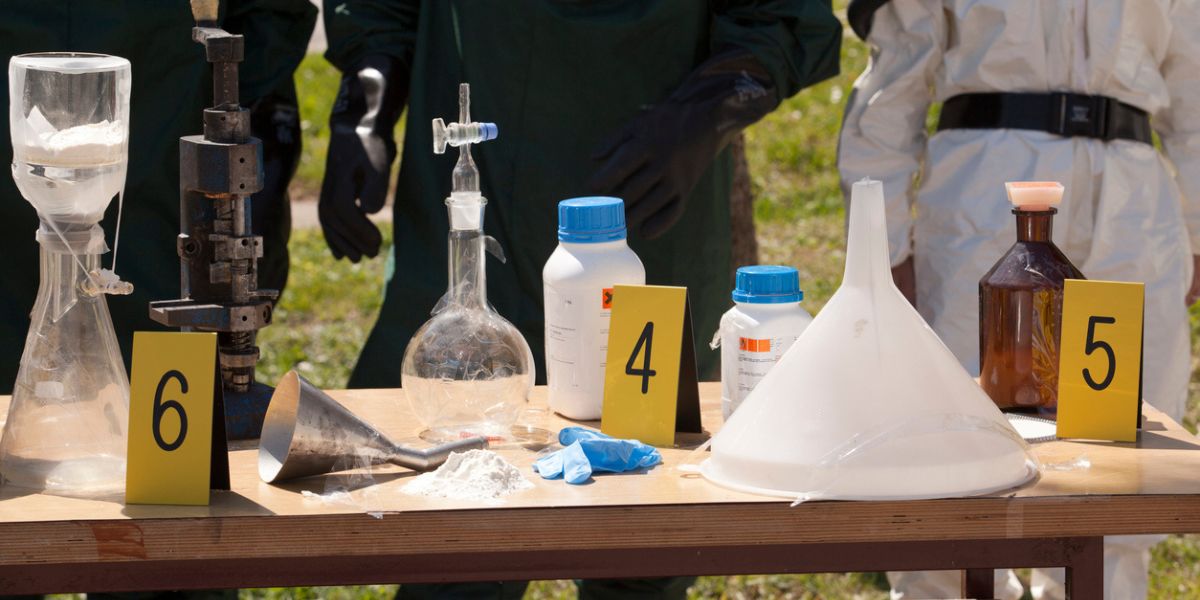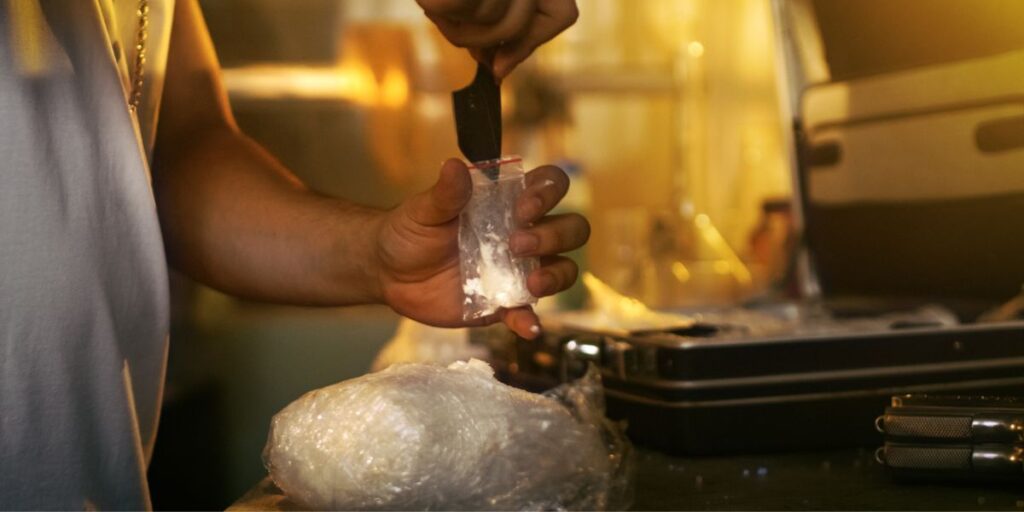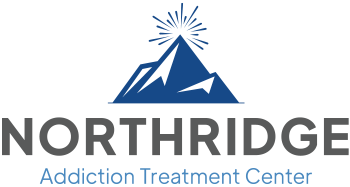What Is Meth Made Of?

Methamphetamine is a strong central nervous system stimulant that alters the brain, causing increased energy, talkativeness, and intense happiness. Unlike natural drugs, meth is made by mixing dangerous chemicals in small makeshift laboratories. These discreet meth labs are easy to hide, which makes it difficult for law enforcement to stop them.
Meth is a Schedule II drug under the Controlled Substance Act (CSA) because it has a high potential for abuse. Meth is an addictive drug produced using harmful chemicals and waste products by unskilled people. The meth production process is highly toxic and flammable and involves a complex process.
This information will assist you to understand how meth is created, the ingredients used in its production, the reasons for its high risk, and the severe health consequences and dangers linked to meth addiction.
Ingredients in Meth
Methamphetamine is a drug that can be created in small labs using ephedrine or pseudoephedrine, which are found in specific cold medicines that you can buy without a prescription. To fight against the production of meth, Congress passed the Combat Methamphetamine Epidemic Act in 2005. Stores must keep records of pseudoephedrine purchases and can only sell a limited amount each day to discourage methamphetamine production.
How Is Meth Made?
Methamphetamine is made by cooking ephedrine and pseudoephedrine with harmful substances like ammonia. These additional ingredients can include other stimulant drugs or drain cleaner and paint thinner.
The particular mix of ingredients used to make meth can be different from one person to another. They blend these ingredients, put in some water, and use a substance like alcohol or acetone to warm up the mix. This heating step is what creates crystals, which is a type of methamphetamine called crystal meth.

What Is Meth Cut With?
People often dilute or “cut” methamphetamine with various substances to increase profits and enhance the drug’s effects and strength. During the manufacturing process, people making meth use these cheap and easily available cutting agents found in household items. Adding these substances to the drug increases health risks and makes a fatal overdose more likely.
Some commonly used cutting agents in methamphetamine production include:
- Battery acid
- Lithium
- Paint thinner
- Acetone
- Red phosphorus
- Drain cleaner
- Anhydrous ammonia
- Freon
- Amphetamines or other stimulant drugs
- Fentanyl or other dangerous synthetic opioids
The Dangers of Making Meth
As per the Drug Enforcement Administration (DEA), Mexican drug groups are the primary makers and providers of methamphetamine to cities in the Midwest and West parts of the United States. These illegal drug trafficking groups run big “super labs” that can rapidly create large amounts of methamphetamine at a low price and with strong effects.
On the other hand, there are also smaller labs within the country called “small toxic labs” that produce smaller amounts of methamphetamine. These labs are typically set up in makeshift locations like motel rooms, cars, rural areas, or other places. A big issue is the dangerous waste from meth labs, which can harm people, especially kids, with harmful chemicals. One pound of meth can cause up to five pounds of toxic waste to pollute the soil and water nearby.
The entire process of manufacturing methamphetamine releases toxic fumes that can harm anyone who comes into contact with them. Meth labs are extremely flammable because the chemicals used in meth production can produce explosive gases rapidly. This makes accidental fires and explosions a significant risk. In 2010, the National Institute on Drug Abuse (NIDA) reported a total of 15,256 domestic methamphetamine laboratory incidents.
Mexico has made its restrictions on chemicals used to make meth stronger, but manufacturers still find ways to bypass them. Mexico has been using a different process called P2P meth to make meth without pseudoephedrine. P2P meth uses phenyl-2-propone, pseudoephedrine’s precursor chemical.

How Dangerous Is Meth?
Regular meth use causes short-term health problems like unpredictable behavior, aggression, occasional psychosis, and intense paranoia.
Long-term methamphetamine use leads to a variety of severe health effects and psychological consequences. Prolonged use of methamphetamine can result in the following side effects:
- Sleeplessness
- Feelings of aggression
- Outbursts of violence
- Respiratory issues
- Intense cravings for the drug
- Severe dental problems, commonly referred to as “meth mouth,” where users experience tooth decay and tooth loss
- Depression
- Delusions
- Mood swings
- Hallucinations
Meth Addiction Treatment
Studies have indicated that the best treatments for meth addiction include behavioral therapies such as cognitive-behavioral therapy (CBT), individual and group counseling, 12-step support programs, and a supportive atmosphere. Research has discovered that employing these approaches aids individuals in decreasing their meth use.
If you or someone you care about is facing methamphetamine addiction alongside a co-occurring mental health disorder, Northridge Addiction Treatment Center’s residential treatment facility could be a valuable place to regain control of your life and prioritize your recovery.
Inpatient rehab programs have shown higher success rates for recovery compared to outpatient programs, especially for more severe drug addictions like methamphetamine. At NATC, our first step is a medical detox program, where you will receive 24/7 medical care to ensure your safety during the withdrawal process and empower you to begin treatment.
Our addiction specialists will closely collaborate with you. They will create a personalized treatment plan that meets your specific needs. The plan will also align with your goals.
Please reach out today for a free consultation with one of our caring treatment specialists. They are enthusiastic about aiding you in your path to recovery. Don’t hesitate to contact us now.
Find Meaningful Recovery
Our caring and compassionate specialists are eager to help you comfortably navigate this journey to recovery. Our individualized treatment plan, programs, and therapies may be a perfect match for you or your loved one. Let us assist you in living the happy life you deserve. It starts with a phone call.




